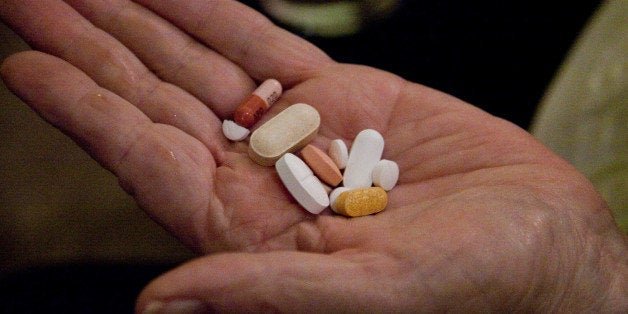
The pharmaceutical sector is still struggling to find an operating model that will work in the 21st century. The shocking news of GlaxoSmithKline's sale of its cancer-drug business to Novartis -- and the many recent huge deals like it -- are the most recent evidence.
And no doubt it is pharma's profound state of change -- not unlike others like music, television, energy, publishing -- which are part of their struggle to break out and start delivering the kinds of shareholder returns that everyone grew accustomed to in the last two decades of the 20th century.
But that was then. And this... well, it's a new kind of now. The industry used to be defined by great innovative discoveries that led physicians globally to write billions of value in scripts. Now, a set of external influences weighing in heavily -- at least as much impact as the traditional drivers of success -- R&D and Marketing.
Most incredibly, there is the degree to which the industry has become politicized. It was in 2000 when then-Presidential candidate Al Gore created the nefarious trifecta of Big Tobacco, Big Oil, and Big Pharma. This three-headed scapegoat became a core talking point that would help propel him to win the popular vote.
The regulatory environment in the U.S. has also become increasingly burdensome as is that across the globe from Europe to Japan, the other two sources of pharmaceutical company revenue outside the U.S.
But, most of all, and not unrelated to the first two, companies pricing models have come under crippling pressure. On one level, the aging of the population is driving up demand for health products and services. On another level, both public and private insurance plans are increasingly unable (and often unwilling) to pay for innovative medicines - medicines that were created through the "magic" of the sector's R&D. And both of these marketplace dynamics are exacerbated by the "information explosion" -- in which more and more people have come to demand they get the medicines. But then they want it on the cheap -- often too cheap to continue to fund the innovation of the last century.
All of this prompts the question: Will these Pharma mega-deals just rearrange cubicles? Or will they prompt companies to implement the structural changes needed to operate -- and thrive -- in our 21st century healthcare marketplace?
Time will tell. In the meantime, jittery leaders in pharma c-suites may want to bring 21st century realities into their strategic planning.
1. Demography versus Geography: From a global point of view, the aging process makes us more alike than different. Healthcare growth in the years ahead isn't regional -- it's not Europe or China or the U.S. It's demographic: it's keeping the billion-plus over-50 segment healthy and active. A demographic lens also shows where to invest. The obvious choices are Alzheimer's, mental health, cardiovascular disease, and other non-communicable diseases that we get in fantastic amounts as we age. But there's more to it than that. Healthy, active, productive aging in the 21st century will demand that we learn to overcome theh 20th century conditions of aging - deteriorating skin, loss of vision, hearing, and muscle mass. Solving these conditions will create markets worth trillions in the decades ahead. And in the process add value to humanity about which Non-Profit world could only dream.
But this is not just a health issue, or a question of corporate profits. Most fundamentally, this is a question of economic growth and national economic competitiveness. Dollars that go to healthy aging are not a cost, but an investment. The decision-makers -- those who decide how to deploy resources to align the medicines with willingness to pay -- need to get this memo.
Back in the eighties and nineties, the sector relied on physicians and aligned its resources accordingly. In the 21st century, there are new sets of "stakeholders," like caregivers, payers, nurses, and communication outlets all with impact on the decisions and choices around pricing, prescribing and paying. Interesting that while there's a lot of internal industry movement, one hasn't seen much of buying outside the box -- a home care company, a communications company, an economics unit -- that might be more closely aligned to succeeding in the new environment.
2. Data versus Development: Drug development seems hopelessly stuck in an old paradigm as one barely sees evidence of applying big data, search engine analytics, and global, instantaneous information capabilities to development, including the cumbersome and what should be 20th century clinical trial process. But to really understand these applications, including the truly profound regulatory changes that will have to be brought along, pharmaceutical companies would want not to acquire one another, but instead look to Silicon Valley. A partnership with Google could lead to a GPS for clinical trial development.
3. External versus Internal: The most forward-thinking in the pharmaceutical sector have made the leap to bring the development phase of their innovative medicines into the commercial side, in some cases just after "proof of concept." This is a good move, as it allows an early, expedited internal decision-process on whether the medicine is likely to make it in the marketplace. In years past, pharmaceutical companies could afford to spend billions on a promising candidate without knowing about its commercial likelihood. No longer.
Even among the most progressive companies, there is still a timeworn approach about what constitutes the commercial side. The basic components of change -- population aging, politicization, greater degrees of regulation, consumerization through information and therefore new stakeholders -- hint at what constitutes the characteristics of our 21st century marketplace. These components demand a different set of skills, knowledge, capabilities, and experiences for the pharmaceutical company which will win in the 21st.
So let the industry keep merging and acquiring until it's heart is content. But if the 20th strategies remain, these companies will never recapture the growth of its dream days. More importantly, they will be less capable of innovating for tomorrow's marketplace.
If that's the case, we all lose.
Earlier on Huff/Post50:

